Thyme Profile
Written by admin
Nov 03 2020
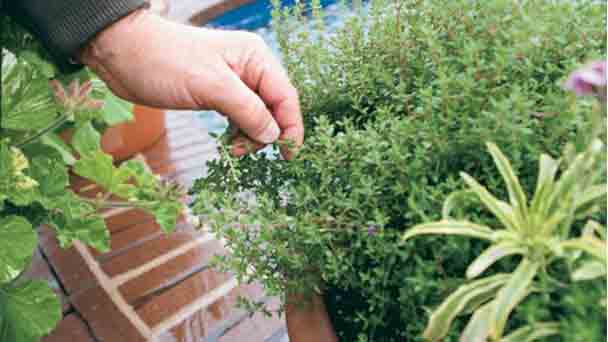
Creeping thyme belongs to a genus in the Lamiaceae family, including about 350 perennial aromatic herbs, with a height of about 40 cm. Thymus praecox grows in Europe, North Africa and Asia. Usually evergreen plants with narrow stems. It has medicinal value and can be used to repel mosquitoes. Thymus praecox can be used for colds, coughs, headaches, toothaches, indigestion, acute gastroenteritis, hypertension.
Creeping thyme is a perennial plant that is native to the Mediterranean region. It has been used as a spice and medicine since ancient times. The scent of creeping thyme is strongest during flowering. Creeping thyme is mainly grown in tropical climates, and annual creeping thyme is also found in temperate regions. The height of creeping thyme plant is 1.2 to 3.6 meters. Flowering creeping thyme is a very common plant in Asia. There are more than 300 varieties. The main varieties are common creeping thyme, red creeping thyme, lemon creeping thyme, golden spot creeping thyme, etc.Thyme morphological characteristics
Stem

Leaf
The leaves of creeping thyme are ovoid, 4-10 mm long, 2-4.5 mm wide, blunt or slightly pointed at the apex, wedge-shaped or tapered at the base, whole or rare 1-2 pairs of small serrations, glabrous on both sides. It has 2-3 pairs of lateral veins, slightly protruding underneath, the glands are somewhat obvious, and the petiole is obvious. The petiole near the lower part is about 1/2 of the leaf length, and the upper part is shorter. The bracts are the same shape as the leaves, and the margin is ciliate in the lower 1/3.Flower
The inflorescence of creeping thyme is capitate, more or less flowered, and the flowers have short stalks. Calyx is tubular bell-shaped or narrowly bell-shaped, 4-4.5 mm long, sparsely pilose on the lower part, nearly glabrous on the upper part, the lower lip is longer than the upper lip or nearly equal to the upper lip, the upper lip has shorter teeth, and the teeth do not exceed 1/3 of the total length of the upper lip with a triangular, ciliate or glabrous shape. Corolla is purple, lavender or pink, 6.5-8 mm long, sparsely pubescent. Crown tube is elongated, 4-5 mm long, slightly enlarged upward.The flowering period of creeping thyme is from July to August.
Fruit
The small nuts of creeping thyme are nearly round or ovoid, flattened and smooth.Thyme growth habit and growing environment and distribution
Creeping thyme prefers a warm, light and dry environment. It does not have high requirements on the soil, but it grows well in well-drained calcareous soil. Thymus praecox likes loose and well-drained land, and it tends to grow in the sun.Creeping thyme is distributed in the temperate zone of northern Africa, Europe and Asia. The main production areas are France, Spain, the Mediterranean countries and Egypt in southern Europe.
Thyme efficacy and role
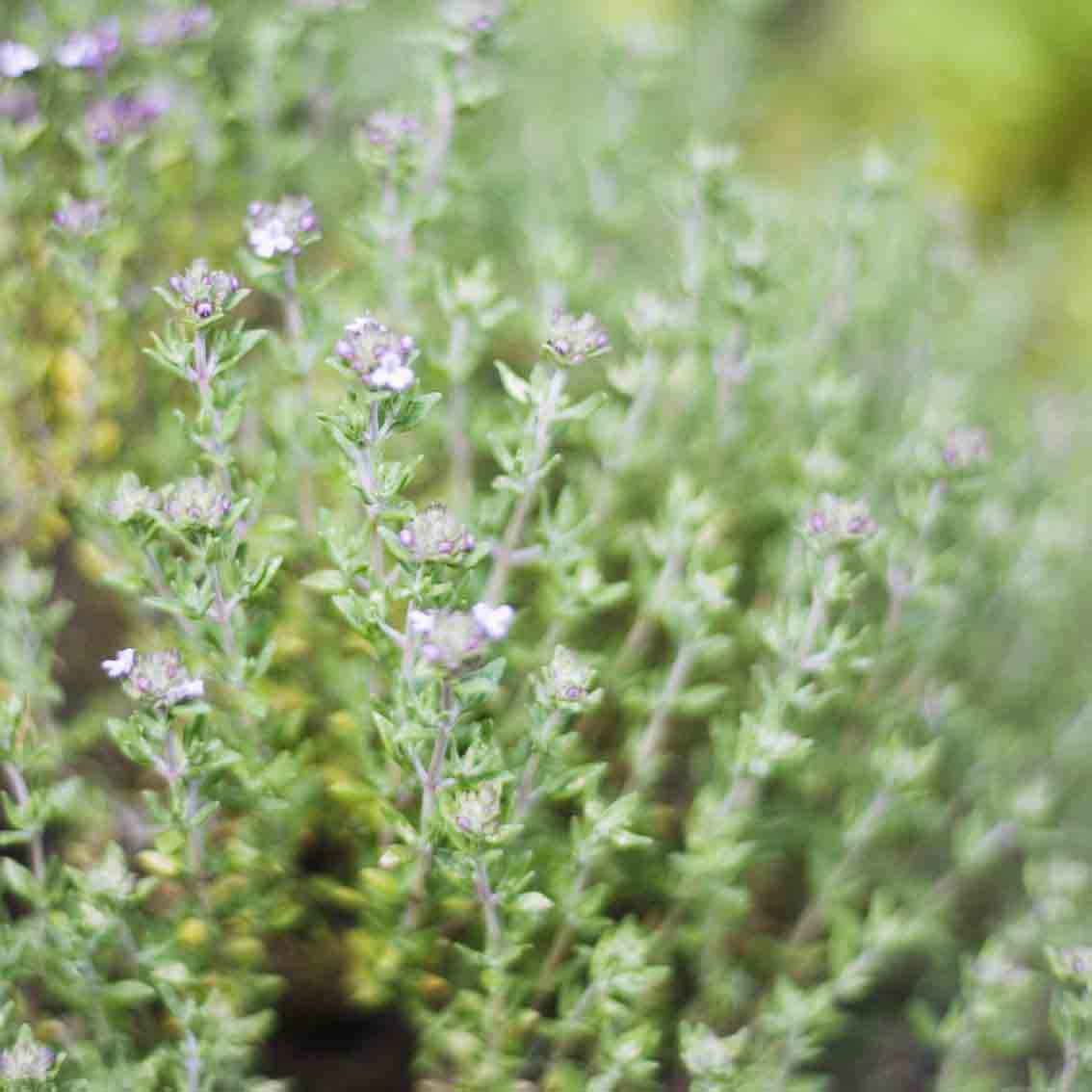
The medicinal value of thyme
Creeping thyme can improve the digestive system and gynecological diseases, promote blood circulation, enhance immunity, reduce neuropathic pain, and have antibacterial effects. It can help wounds heal and treat eczema and pimples. In addition, creeping thyme can activate brain cells, improve memory and concentration, resist depression and soothe the trauma. It is very effective for dandruff and inhibiting hair loss.The leaves of creeping thyme can be combined with all kinds of meat, fish and shellfish dishes. The tea can help digestion, eliminate flatulence and relieve alcohol. The infusion of honey can cure cough, cold and sore throat. Bathing also has the effect of soothing and calming nerves. The refined essential oils have bactericidal effect. It can be made with freckles cream, which can eliminate freckles and repair aging skin. It can also be used to make soap and mouthwash.
Although the appearance of creeping thyme is not outstanding, it has a wide range of uses. creeping thyme can help digestion, hangover, antiseptic, and diuretic. Generally, fresh or dried branches and leaves are used in cooking or soaked into flowers. Drinking tea, creeping thyme tea can also relieve headaches caused by hangovers, but the total daily consumption of such spice plants should not exceed 10 grams, so as not to be too irritating to the human body. In addition, adding some branches and leaves in the water when taking a bath will also have a refreshing effect. If you don't like spice plants that are too strong, you could choose creeping thyme with a softer smell.
The Edible Value of thyme
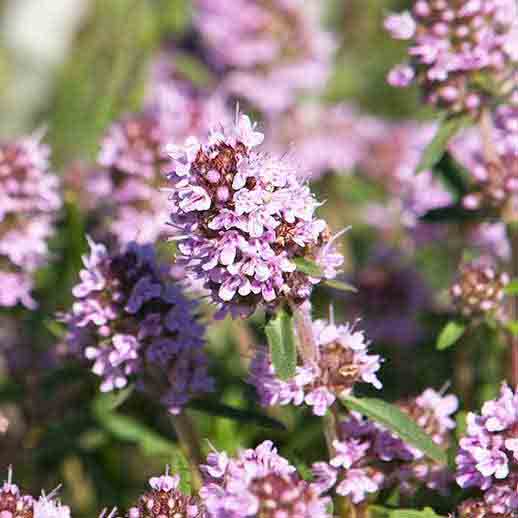
Nutritional analysis
The whole creeping thyme plant contains volatile oil, with the highest content in bloom. Its main components are Thymol, Carvacrol, Linalool and p-Cymol and other compounds. Creeping thyme has antitussive, anti-inflammatory and antiseptic effects. Creeping thyme contains baicalein, glucoside, luteolin-7-glucoside, apigenin and other flavonoids and volatile oil. Excessive amounts have strong irritation and can cause liver degeneration.Ornamental value
In the agricultural poems of Roman poets 2000 years ago, there is a record of using creeping thyme as a spice. In ancient Greece, when sacrificed warriors were sacrificed, creeping thyme was lit on the altar, so in the Greek language, creeping thyme symbolizes nobility and bravery. Creeping thyme has long been famous for its aromatic herbs. Roman cheeses and wines used it as a seasoning and used it as a spice in soups and cans. The essential oil extracted from creeping thyme has obvious disinfection and bactericidal effects. It can treat chest infections and other diseases such as stomach pain and diarrhea caused by cold, and has anti-spasm, antitussive, and traumatic effects. It can also be used as a flowerbed plant arrangement.Cultivation techniques of creeping thyme
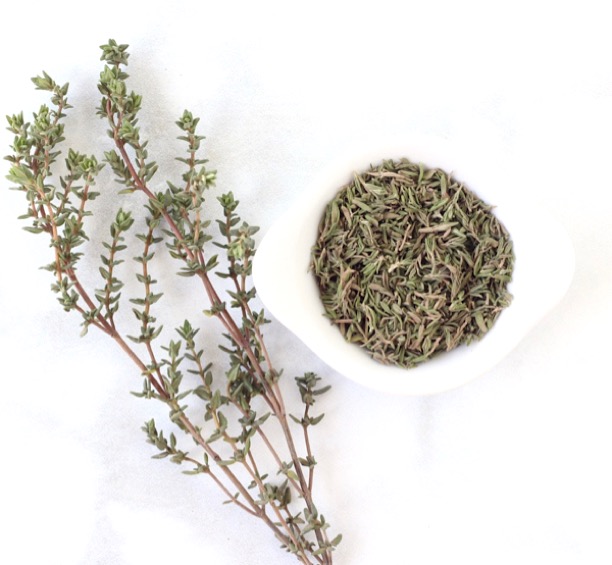
Nursery
Creeping thyme can be propagated by seeds and ramets.①Seed propagation method
Sow seedlings in spring from March to April. Because the seeds of creeping thyme are small, the seedling ground must be finely prepared, the soil must be finely broken and leveled, and then slightly suppressed, watered and sowed, and then covered with a thin layer of fine soil, and a small arch can be covered with plastic film to keep it warm and moisturizing. Creeping thyme seedlings emerge after 10-12 days, and the film will be removed at the right temperature. At the seedling stage, care should be taken to keep the soil moist and to eliminate weeds. When the creeping thyme seedlings are 10-15 cm high, they can be directly planted in the field in rows and plant spacing (30-45) cm × (25-30) cm, and watered after planting.
②Random propagation method
You’d better choose creeping thyme plants that are more than 3 years old, and dig out the roots of the mother plants in late March or early April when they have not sprouted, and then divide them into 4-6 parts according to the size of the clusters. Each cluster should have 4~5 buds. In addition, there is cluster propagation method. During the growth period, you can cut the stolons and transplant them.
Field management
You should water immediately after planting, and pay attention to keeping the soil moist until creeping thyme plants grow slowly. During the growth period, watering can be done once a month, and the soil should be cultivated in time to loosen the soil, and drainage should be paid attention to in the rainy season. Combined with watering, urea can be topdressed 1 to 2 times according to the growth of creeping thyme plants, with an amount of about 5 kg per mu each time. Pour overwintering water before winter and cultivate mature dry manure and cultivate soil to facilitate overwintering.Mode of creeping thyme reproduction
The propagation methods of creeping thyme mainly include seed propagation, cutting propagation and ramet propagation.Sowing reproduction
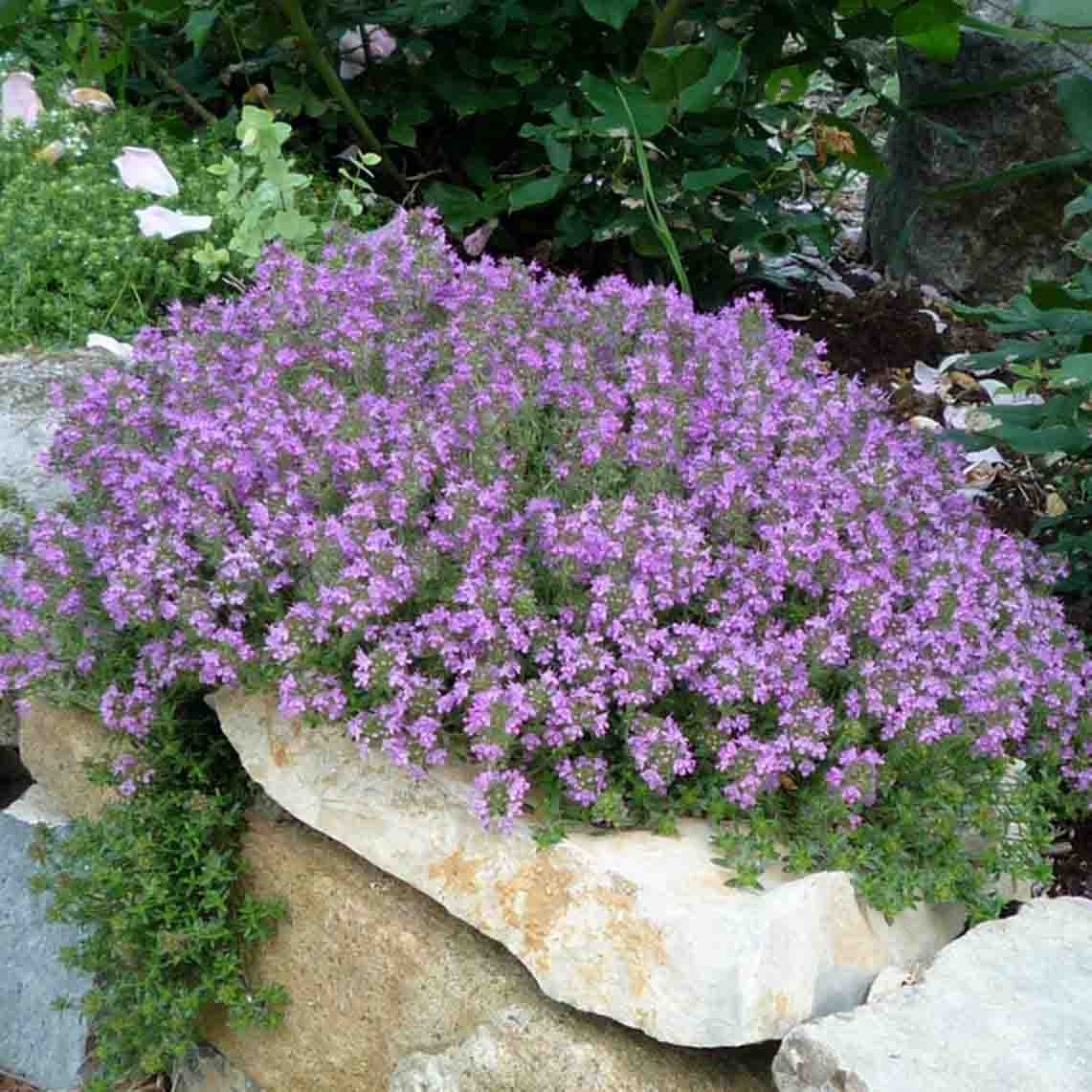
Cutting propagation
The cutting method is very easy to root and reproduce. For mass production, in order to obtain consistent quality, you’d better cut cuttings with 3-5 sections and about 5cm long with top buds, branches without top buds or lignified ones Although the branch cuttings can survive, the rooting speed is slow and the root clusters are less. The cuttings should be inserted in a paper tube seedling tray with a diameter of 2 cm to facilitate transplantation after survival. The layering and ramification methods make the branches contact the ground and automatically grow roots. The direct cut is an independent creeping thyme plant, which is more suitable for home gardening growers.Ramet propagation
You ought to choose creeping thyme plants of more than 3 years old, dig out the roots of the mother plants in late March or early April when they have not yet germinated, and then divide them into 4-6 parts according to the size of the clumps. Each clump should have 4-5 buds. , Ready to plant. In addition, there is a cluster propagation method. During the growth period, the stolons are cut off and transplanted.The cultural background of creeping thyme
Legend One
There is a legend in ancient Greece that a girl who thinks of spring only needs to embroider creeping thyme patterns on her clothes, or wearing a creeping thyme on one's body means looking for a lover and waiting for the suitor to show love.Shy men, just drink a cup of creeping thyme tea. It is said to be able to muster the courage to pursue what you love.
Legend Two
In Greek mythology, Aphrodite (God of Love and Beauty) shed tears when she saw the cruelty of the Trojan War. Her teardrops fell into the earth and became the lovely leaves of creeping thyme. Another theory is that Troy’s tears of Helen turned into creeping thyme drop by drop. The English word for creeping thyme comes from Greece, which means courage.Legend Three
A chanter in the 16th century called the scent of creeping thyme called the heaven of dawn because it smells fresh and charming, natural and comfortable, and pure and beautiful like heaven.According to legend, creeping thyme is related to Helen, Princess of Sparta who is the most glamorous and beautiful, who has caused the famous battle, Trojan War. In Greek mythology, creeping thyme is Helen's tears. Princess Helen, who is all over the country, is the daughter of Queen Rita of Sparta and the god Zeus. Because she is very beautiful, countless princes and nobles pursue her. Helen's adoptive father, King Spartan, in order to avoid everyone fighting for Helen, married her to the new Spartan King Menelaus and became the queen of Sparta.
Not long after the peaceful days, a handsome Trojan prince Paris came to Sparta. After seeing Queen Helen, he was deeply fascinated by her. He tried every means to get close to Helen and confided in love to her. Helen was also attracted by his handsomeness and fell in love with him unconsciously, so the two met and fled to Troy. However, how did the two young people know that this elopement led to the Trojan War that lasted for ten years.
When Troy finally perished and Paris died in battle, Helen couldn't help but shed crystal tears and turned into creeping thyme on the ground, and the expression of tears falling gently on her face made many Trojan warriors head overwhelmed and swore to protect her. Therefore, since then, creeping thyme has been given a symbol of courage and vitality. Women will send a sprig of creeping thyme before their beloved samurai goes out to convey their love and encourage each others’ courage.
Flower Language of creeping thyme
You who like this flower are broad-minded, brave to face difficulties, and have a high self-esteem, and will not give in easily. You believe that tomorrow will be better, make a rational analysis of everything, and not be blindly optimistic.Because of your strong self-esteem, your love will not be very intense, it belongs to the type of rational communication. In addition to its charming fragrance, creeping thyme also has romantic and beautiful meanings and good luck.
The scarves given to brave knights by European women in the Middle Ages are pierced with creeping thyme, which means to bless everything.
Latest Updated
- Benefits of Bugleweed - 7 Science-backed Health Benefits
- Bugleweed Dangers & Side Effects - Is It Poisonous?
- How to Plant Evergreen Trees - What You Should Know
- When to Plant Evergreens - Grow Guide for Evergreen Trees
- 12 Wonderful Evergreen Shrubs for Your Garden
- 12 Popular Evergreen Plants with Pictures for Beginners
- When And How To Prune A Lilac Bush Like a Pro
- How to Grow & Care for Lilac Vine (Hardenbergia Violacea)
- Japanese Lilac Tree (Syringa Reticulata) Care & Propagation Guide
- Shumard Oak Pros and Cons - What to Know
Popular Articles
- Winter maintenance of Antirrhinum Majus
- How to Grow Terminalia Mantaly Tree
- How to Grow and Care for Crossostephium Chinense
- How to grow Antirrhinum Majus in spring
- Peristeria Elata (Dove Orchid) Profile: Info & Care Guide
- Underwatered Snake Plant (Sansevieria Trifasciata) - Signs And How To Fix
- How to Care for Brazilian Jasmine Plant (Mandevilla Sanderi)
- How to Grow & Care for Graptopetalum Purple Delight in Summer
- Rosa Chinensis (China Rose): Plant Growing & Care Tips
- How to Care for Baby Sun Rose (Aptenia Cordifolia)